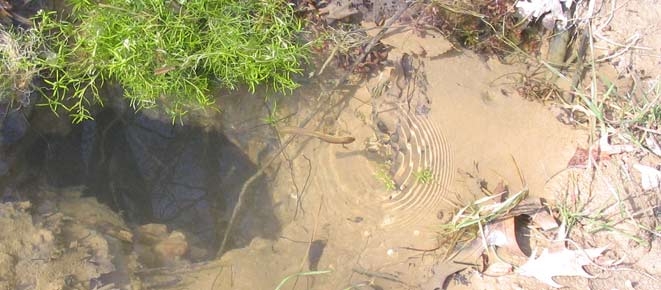By Kate Traut, Environmental Scientist
Sure, I’m a tree-hugger. I’ve been called worse. Actually, I’m proud to be known to flip a log in search of a sleepy snake, to be the one to corral a lost bug out the door, to have dirt under my fingernails, and to literally hug a tree.
That’s why it brought me particular joy to receive an email from a client who thought to come to me to identify some interesting critters he saw at one of our project sites. One might be satisfied assuming that all environmental scientists want to spend every billable hour outside and all engineers would rather bask in the comforting glow of their MicroStation display. But this client’s email proved otherwise. While meandering through the project area (outside the limits of disturbance, he reassured me), this engineer happened upon a crystal clear spring in which he observed “an amazing little community of aquatic life including many salamanders at various stages of development and different aquatic bugs.” He noted that the salamanders were surfacing for air and some were “scattered along the spring-fed stream path.” He wanted to know what kind of salamanders they were. “Just curious,” he wrote, “it was one of those fascinating little unexpected finds that don’t seem to happen often enough.”
I am not a salamander expert, but I do know that these little creatures are red-spotted newts. Not an uncommon species, but always fun to see and a good indicator of decent water quality and a sure sign of spring. These newts are a type of salamander that are aquatic in their larval and adult phases, but are unique in that they spend an intermediate phase (the red eft stage) on land.
